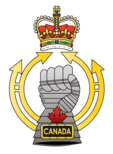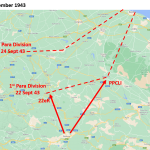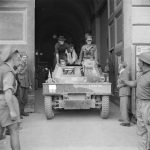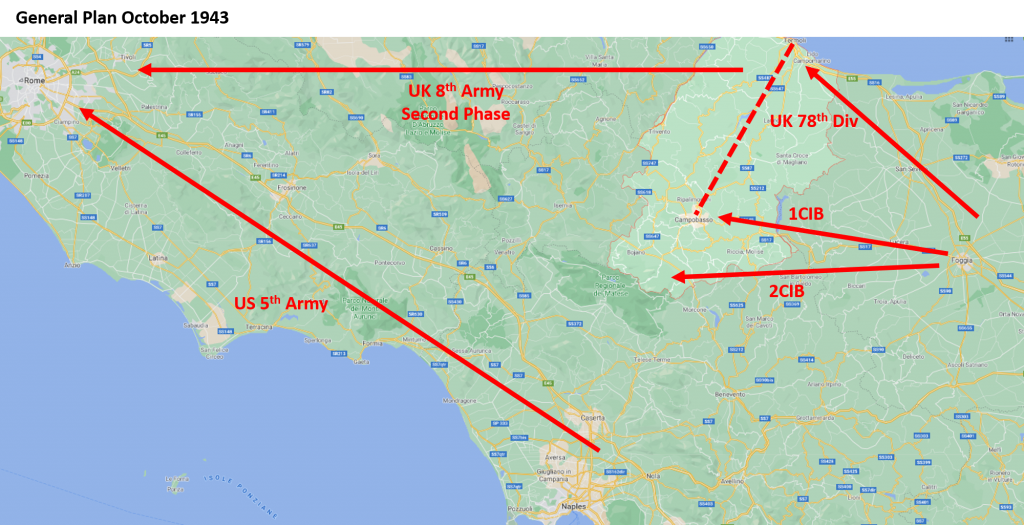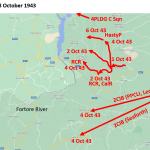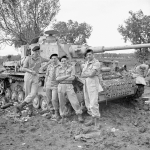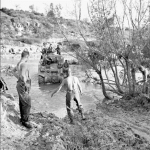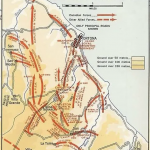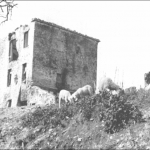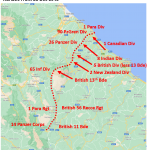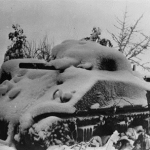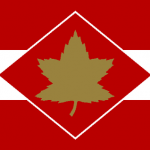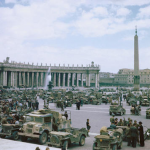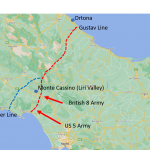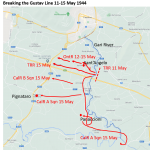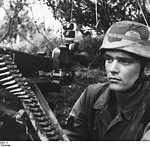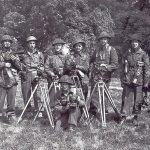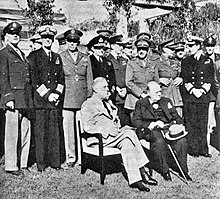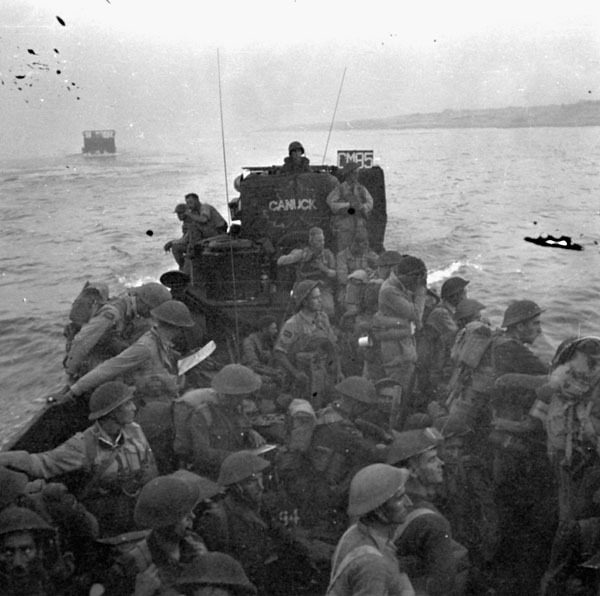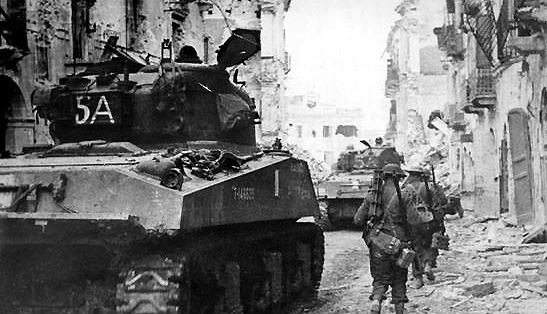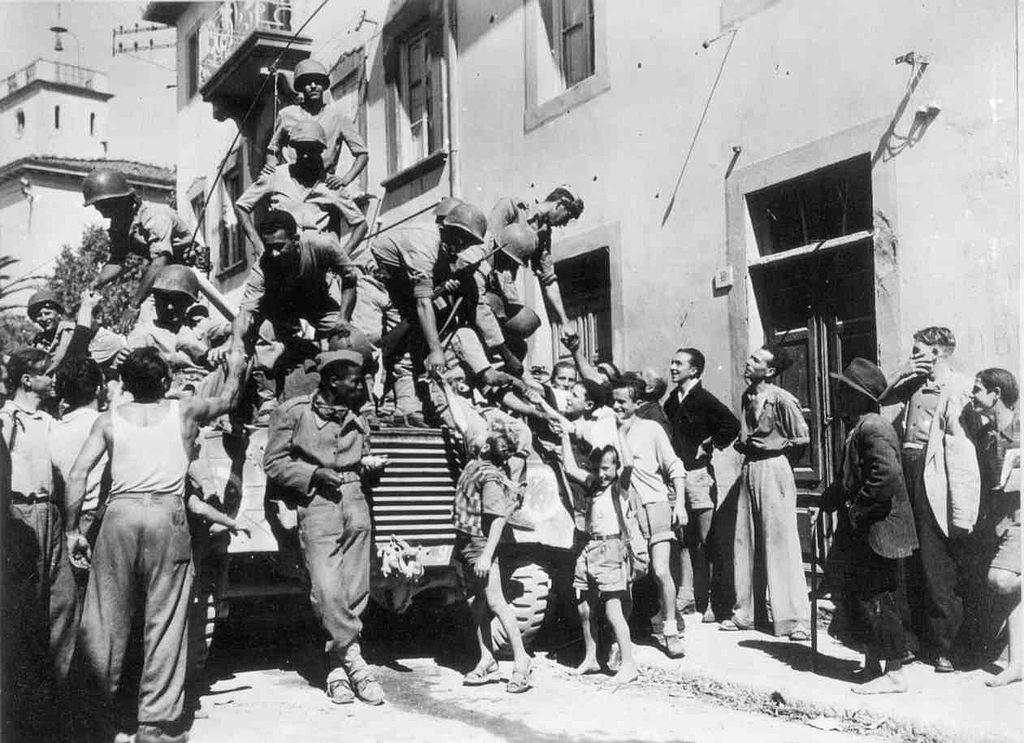On 15 May 1944, the offensive continued using three corps. British 13th Corps would move to its right and with the Polish 2nd Corps encircle and Cassino and take Highway 6 leading to Rome. I Canadian Corps would pass through the Indian 8th positions and advance westward.
1CID was ordered to relieve the Indian divisions and then advance to contact with the next German Defense line – the Hitler line. On 16 May, 1CID advanced. 1CIB held the line between Pignataro and the Liri. That evening, 3CIB moved to hold the right flank north of Pignataro.
The Indian 8th Division, the OntR and CalR went into the Corps reserves for rest and refurbishment. TRR remained in support of 3CIB.
The next morning (17th), 1 and 3 CIB attacked across the Cassino-Pagnataro road. That day saw advances across the front for the Allies. The Canadians advance 5 km in the face of enemy resistance. The Poles and the British 13th surrounded and cut off Cassino and Monte Cassino (not without the last of the German 1st Parachute Division making good their escape up Highway 6 towards Rome).
The advance continued on the 18th following the German withdrawal across the whole front. That afternoon 1 and 3 CIB were closing in on the Aquino-Pontecorvo road which heralded the Hitler line frontage. There they came under heavy fire and stalled the advance.
On 19 May 1944, the OntR and elements of the British 78th Division committed to a hasty attack on the airfield and agricultural town of Aquino. The attack failed with every OntR tank being hit at least once and 13 tanks lost. Similarly, 22eR (1CID) also attacked the line and were repulsed with heavy loss.
The orders on the 20th were for a Corps level attack on the Hitler line. The next three days were spent preparing for the attack. The operation was codenamed “Chesterfield”. 2CIB was brought up from the reserves and took a sector to the right of 3CIB.
Chesterfield began with a preparatory barrage of 400 guns over 72 hours. Operation “Chesterfield” was to be executed in two main phases. In the opening one the 1st Division, supported by the 25th (British) Tank would break through the line to the high ground 1000m behind the line. Then 5CAD would exploit the break-through, seize the Melfa river crossing before pressing on to take Ceprano.
At 0500 23 May, the preparatory bombardment grew from 400 to 800 guns. Then 2CIB and 3CIB attacked under protection of a creeping barrage. 2CIB on the right took heavy causalities and only barely took their first objective before being stalled. The North Irish Horse who were supporting 2CIB had (reported) 13 tanks knocked out by a single Panzertrum. 3CIB was more fortunate. The C&YR was able to take their objective in the first hour, opening up the breach for the Churchills of the British 51st Royal Tank Regiment. Quickly joined by the West Novas, they were able to consolidate on the objective. At mid-day, the divisional reserves were committed to supporting 3CIB. Two TRR squadrons and 22eR moved up and joined the West Novas in a final attack. By 0600hrs the next morning, the tanks of 5CAD were moving through the breach.
1CID recorded 51 officers and 838 other ranks as casualties. The British 25th Tank Brigade lost 60 tanks ⎯ 41 of them Churchills of the North Irish Horse. Later estimates had the German strength at less than 1000. The entire force was either killed (~200) or captured (~700). This accounted for two Panzer Grenadier Regiments.

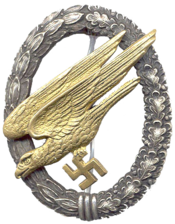 The Fallschirmjäger were the paratroop branch of the German Luftwaffe. They were considered elite troops and proved it in the early days of World War II. For much of the combat in Italy, the Canadians faced these elite troops in their advance, Ortona, and the Gothic Line.
The Fallschirmjäger were the paratroop branch of the German Luftwaffe. They were considered elite troops and proved it in the early days of World War II. For much of the combat in Italy, the Canadians faced these elite troops in their advance, Ortona, and the Gothic Line.
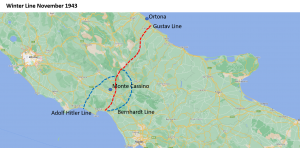 The Winter Line was a series of German military fortifications in Italy in 1943, commanded by Albert Kesselring. These three lines was designed to defend the area around Rome. Its defence hinged on the town of Monte Cassino and Highway 6 that ran direct to Rome. The Gustav Line ran across Italy from just north of where the Garigliano River flows into the Tyrrhenian Sea in the west, through the Apennine Mountains to the mouth of the Sangro River on the Adriatic coast in the east. The two subsidiary lines, the Bernhardt Line and the Hitler Line ran much shorter distances from the sea to just North East of Cassino.
The Winter Line was a series of German military fortifications in Italy in 1943, commanded by Albert Kesselring. These three lines was designed to defend the area around Rome. Its defence hinged on the town of Monte Cassino and Highway 6 that ran direct to Rome. The Gustav Line ran across Italy from just north of where the Garigliano River flows into the Tyrrhenian Sea in the west, through the Apennine Mountains to the mouth of the Sangro River on the Adriatic coast in the east. The two subsidiary lines, the Bernhardt Line and the Hitler Line ran much shorter distances from the sea to just North East of Cassino. 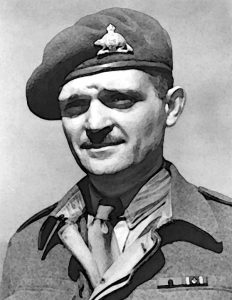 Casa Berardi, Italy – December 14, 1943
Casa Berardi, Italy – December 14, 1943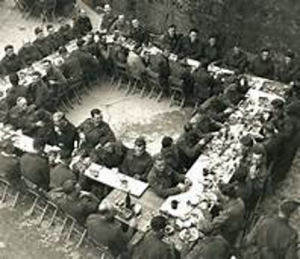
 (image Canadian no 19 set) The movement of the British 8th Army from Ortona to the mouth of the Liri Valley had to be concealed from the Germans. In order for this to take place, a massive strategic deception took place.
(image Canadian no 19 set) The movement of the British 8th Army from Ortona to the mouth of the Liri Valley had to be concealed from the Germans. In order for this to take place, a massive strategic deception took place.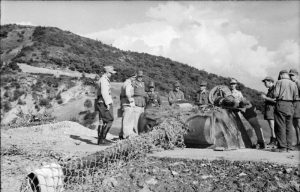 German defensive works were quite elaborate and well planned. One of the more interesting features was the Panzertrum. This was a Panther Mark V turret armed with 7.5 cm KwK 42 L/70 gun embedded on top of a buried prefabricated metal or concrete bunker. This gun could penetrate any allied armour to a distance of 1,200m and since it was in a turret; it had 360-degree coverage. The bunker contained living quarters, a generator, and ammunition storage for the crew.
German defensive works were quite elaborate and well planned. One of the more interesting features was the Panzertrum. This was a Panther Mark V turret armed with 7.5 cm KwK 42 L/70 gun embedded on top of a buried prefabricated metal or concrete bunker. This gun could penetrate any allied armour to a distance of 1,200m and since it was in a turret; it had 360-degree coverage. The bunker contained living quarters, a generator, and ammunition storage for the crew.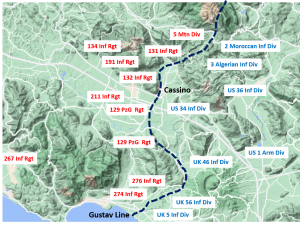 The Battle of Cassino takes place at the mouth of the Liri Valley between mid January and mid May 1944. It is a series of four assaults to open up Highway 6 which runs through the valley to Rome.
The Battle of Cassino takes place at the mouth of the Liri Valley between mid January and mid May 1944. It is a series of four assaults to open up Highway 6 which runs through the valley to Rome. Monte Cassino is a Catholic monastery situated high on a rocky hill above the town of Cassino. The first monastery was established by St. Benedict of Nursia (480-527, founder of the Benedictine Order) in 529 AD. Prior to that, it was the location of a Roman temple to Apollo.
Monte Cassino is a Catholic monastery situated high on a rocky hill above the town of Cassino. The first monastery was established by St. Benedict of Nursia (480-527, founder of the Benedictine Order) in 529 AD. Prior to that, it was the location of a Roman temple to Apollo.